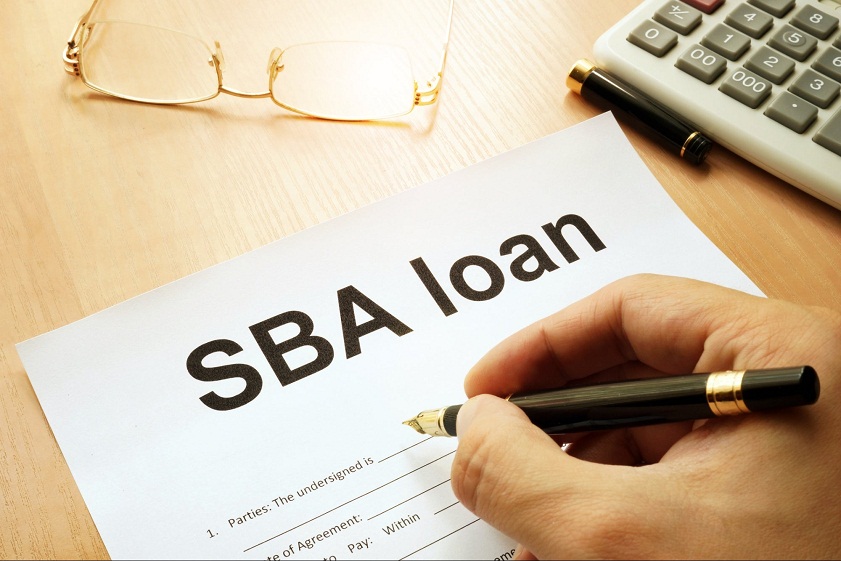Did you know SBA loans range from $500 to $5.5 million? They provide great flexibility for startups looking for funds. With this support, new businesses can access financial resources that might be hard to find. SBA loans help whether you need working capital or want to buy fixed assets. They offer better terms than regular loans.
SBA loans make it easier for startups to get the money they need. They have lower down payments and more flexible rules. These benefits are key when you’re starting a business. Some SBA loans also offer mentoring and resources. They help your business grow from a new startup to a successful company.
SBA loans do more than just offer money. They reduce the risk for banks by backing up to 85% of the loan. This makes banks more likely to lend. To get an SBA loan, you need to meet certain rules. You also need to pay back on time and show you can’t get money elsewhere.
The Unique Advantages of SBA Loans
SBA loans offer great benefits, especially for startup entrepreneurs. They include great support resources and better loan terms. Programs like SCORE and the Office of Women’s Business Ownership provide helpful guidance and education.
The SBA 7(a) lending program is known for its flexibility. It allows loans for many purposes, like buying equipment or refinancing debt. More than $23 billion in SBA 7(a) loans were approved in the 2024 fiscal year. This shows how important these loans are for startups.
SBA loans also have competitive interest rates. For example, some online lenders that specialize in SBA loans may offer rates as low as 15% APR. This is much lower than some online small-business lenders, which can charge up to 99% APR. This makes SBA loans for startups a smart choice, due to the easy repayment plans.
Additionally, the SBA offers microloans for startups. These loans can provide up to $50,000 and have repayment periods of up to six years. Microloans are very helpful for freelancers and home-based businesses that need smaller capital amounts.
The table below illustrates some key comparisons of different SBA loan programs:
| Loan Type | Maximum Loan Amount | Usage | Repayment Terms | SBA Guarantee |
| SBA 7(a) | $5 million | Startups, acquisition, working capital | Up to 25 years | 50% – 90% |
| Microloans | $50,000 | Startups, home-based businesses | Up to 6 years | None |
| SBA 504/CDC | $5.5 million | Fixed assets | Up to 20 years | 40% of project |
| SBA Express | $500,000 | Working capital | Up to 7 years | 50% |
SBA-approved lenders also provide important support. They offer advice and help find the best loan for your business’s needs. For example, Huntington National Bank was the most active 7(a) lender in the 2024 fiscal year.
Also, there are no upfront guarantee fees for SBA 7(a) loans under $1 million until September 2025. This helps new entrepreneurs. The loans range from $75,000 to $5 million. The SBA guarantees between 50 and 90 percent of the loan amounts. This makes SBA financing a strong option for business owners.
Lastly, SBA loans often have longer repayment terms and lower interest rates than traditional loans. They also work for businesses with little collateral. With access to many resource centers, SBA loans are very beneficial for startups facing early financial hurdles.
How SBA Loans Increase Financial Accessibility
SBA loans help startups by enhancing their financial access. These loans are partly guaranteed by the U.S. Small Business Administration (SBA). This guarantee can cover up to 85% of the loan through partner banks. This makes lenders more willing to fund a wider range of businesses.
Startups often struggle to get funds from traditional banks. But SBA’s guarantees help them stand a better chance. This opens doors for many new businesses that otherwise wouldn’t have made it.
The SBA makes it easier for these startups by simplifying loan processes. Loans under $500,000 don’t need equity injections. This flexibility lets startups use their funds for important needs. Needs like buying property, getting new equipment, or covering daily expenses.
This approach is especially good for entrepreneurs from underserved communities. It tears down old barriers to funding. Making it fairer for everyone to get the financial help they need.
In Fiscal Year 2023, the SBA gave out $27.5 billion in 7(a) loans. That’s a 45% jump since President Biden came into office. The SBA also provided $8 billion through private funds. And a total of $52.4 billion in capital, disaster relief, and bonds.
These efforts are widening SBA loans’ reach. They’re sparking more growth in the economy. And they’re helping to create a more varied group of business owners.

